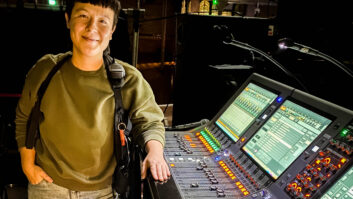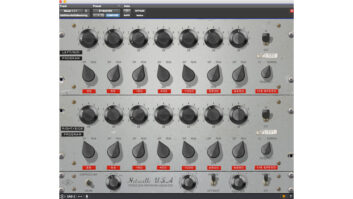

The problems associated with traditional wedge monitoring are many, ranging from difficulty for the artists to hear themselves clearly and inconsistent monitor performance from room to room, to feedback and a general wash of noise coming off the stage, making the front-of-house mix a mess. Other issues include ear fatigue and the well-known danger of hearing damage due to high onstage SPLs. By eliminating traditional stage wedges, artists who use in-ear type monitors (IEMs) can avoid most of these problems.
As the popularity of IEMs has soared, prices have dropped and the technology has advanced — much to the delight of monitor and FOH engineers. However, along with the advantages of IEMs comes the responsibility for ensuring that sensible monitoring levels are used to prevent hearing damage. Here, a little extra care and common sense goes a long way.
IEM BASICS
Most artists use wireless in-ear systems for the same reason they use wireless instruments: onstage mobility. Some IEMs are hard-wired, appealing mainly to drummers and keyboard players who are tied to their rigs and don’t need to move around. Wireless IEMs operate similarly to wireless mics, except the broadcast process is reversed: A base station transmitter broadcasts a signal to a beltpack receiver, which amplifies the signal and routes it to a set of earpieces. Beltpack controls typically include channel select, on/off, mute, balance and volume. Some systems turn the wireless receiver into a 2-channel mixer, where a discrete signal is sent to each channel and the balance control mixes the signals. For example, a band mix might be sent to channel 1 while the performer’s own voice or instrument goes to channel 2. The balance control lets the artist mix between the two signals, with the result sent to both left and right earpieces.
Most systems surveyed here operate in the UHF band; however, a well-designed VHF system can challenge the performance of a poor-quality UHF system. A key feature to consider in any wireless system is frequency agility, or the ability to switch among different operating frequencies. Such systems let users choose from as few as four to hundreds of operating channels across a variety of frequency bands.
The chart displays each system’s number of bands and frequencies, but this does not necessarily equate to the number of actual frequencies to which the system can be tuned. Adjusting operating frequency is much easier on beltpacks that have some sort of external channel selector/indicator, as opposed to packs that use internal DIP switches. Some systems can automatically scan the local RF spectrum to identify a clear frequency — a time-saver when multiple units are run in a busy RF area.
Speaking of RFI, serious RF users should check out Intermodulation Analysis Software (IAS) from Professional Wireless Systems (www.professionalwireless.com/ias/index.aspx). IAS assists in frequency selection and coordination of wireless units to avoid RF interference across 40,000 ZIP codes in the United States. Other features to look for are remote antenna connectors on the transmitter’s rear panel, and EQ or limiting on the beltpack’s audio output.
Mindful of this growing market, some companies are building IEM-specific accessories, such as the dbx (www.dbxpro.com) IEM Audio Processor, which provides peak-stop limiting, 4-band stereo compression, parametric EQ and Lexicon reverb algorithms. Shure’s P4M is a 4-channel mixer with an audio split, while its AP201k Ambient Pack has a lavalier mic to introduce ambience to an in-ear mix.
WHERE’S THE ROOM?
When wearing earpieces, the lack of ambient sound can make an artist feel isolated from the audience and other performers. As a result, some monitor engineers will run audience or stage mics, bleeding them into the performer’s ear mix. Sensaphonics has taken this concept to the next step with its 3D Active Ambient IEM system, which uses sensitive, precision-equalized mics embedded in the earpieces to capture stage ambience with natural sound quality and accurate directional cues. Signals from the mics are sent to a bodypack mixer, where they can be added to the mix from the monitor console without latency. Several manufacturers have introduced or are working on products for ambience recovery, either electronically or through the use of “vented” earpieces.
The chart on page 54 surveys in-ear systems, with an emphasis on electronics. We did not include earpieces in this survey for two reasons: First, choice of earpiece is an extremely personal decision. Second, earpieces can always be mixed and matched to the support electronics.
In addition to being Mix‘s sound reinforcement editor, Steve La Cerra mixes front of house for Blue Öyster Cult.








